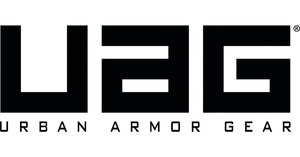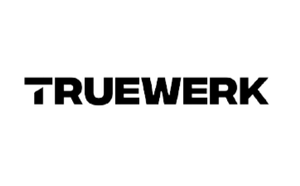Today, while digital marketing is evolving very fast, AI (artificial intelligence) technologies like ChatGPT remain a bit of an unknown for marketers who would further want to expand into the depths of SEO and content creation.
In this article, we dive deep into the ins & outs of using ChatGPT for SEO. We'll give some use cases that may inspire how things are done in the future for digital marketers, whether it be content creation, keyword research, or others functions. We’ll also share some tips and tricks on what Google has within its guidelines for AI-generated content.
What is ChatGPT?
Chat GPT stands for Chat Generative Pre-Trained Transformer and was developed by an AI research company, Open AI. It is an artificial intelligence (AI) chatbot technology that can process our natural human language and generate a response. Simply put – you can ask Chat GPT a question, and it will give you an answer.
Source: https://lighthouseguild.org/what-is-chat-gpt/
How can you use ChatGPT for SEO purposes?
A. Help With Content Creation
First you should know this:
According to Google: “Appropriate use of AI or automation is not against our guidelines. This means that it is not used to generate content primarily to manipulate search rankings, which is against our spam policies.”
https://developers.google.com/search/blog/2023/02/google-search-and-ai-content
So, while you could use ChatGPT to create content, you might create content that violates Google's guidelines.
For this reason, we’d advise against using ChatGPT for content creation, but you can still use tools like ChatGPT to help with the process.
Examples:
Creating Titles
You can choose a topic for an article, research it, and create a prompt for ChatGPT to help generate a title.
Sample prompt:
Craft a sophisticated and engaging article title that encapsulates [add-current-main-topic-here]. Targeted at an audience of senior digital marketing professionals and strategists in the US, the title should reflect the cutting-edge nature of the content and appeal to experts looking for innovative approaches to data-driven marketing optimization.
Creating Meta Descriptions
What ChatGPT is good at is almost always having a consistent quality level.
There are dedicated add-ons for Google Sheets that can help with integrating ChatGPT:
- GPT for Sheets™ and Docs™ - Google Workspace Marketplace https://workspace.google.com/marketplace/app/gpt_for_sheets_and_docs/677318054654
- SheetGPT - AI and ChatGPT for Sheets™ - Google Workspace Marketplace https://workspace.google.com/marketplace/app/sheetgpt_ai_and_chatgpt_for_sheets/1071108744264
What prompts can you use?
Let's say the topic of a page is: "Maximizing Home Office Productivity for Remote Workers".
For that page you have a target keyword: "home office efficiency tips".
You can adapt a prompt like this:
Compose a compelling and SEO-optimized meta description for an article titled 'Maximizing Home Office Productivity for Remote Workers', incorporating the target keyword 'home office efficiency tips'. The description should convey the article's value to an advanced digital marketing audience, highlighting innovative strategies, tools, and tips for enhancing productivity in a home office setting. Ensure the meta description entices clicks by promising actionable insights and is crafted to meet users' search intent to improve their remote work environment and efficiency. The meta description should be 120–160 characters long (including punctuation and spaces).
Creating Content Outline
You'll need a content outline after deciding on a topic (see below for instructions on choosing a target keyword and an article topic).
ChatGPT can help with this.
Again, let's say a page's topic is: "Maximizing Home Office Productivity for Remote Workers".
You can use a prompt like this:
Develop a detailed topic outline for an article titled 'Maximizing Home Office Productivity for Remote Workers'. The outline should cater to an advanced digital marketing audience, focusing on the latest trends, tools, and strategies for creating an efficient and productive home office environment. Include sections on ergonomic setups, technology integrations for seamless communication, time management techniques, and mental health practices to maintain work-life balance. Each section should propose actionable tips and insights, highlighting how these can lead to significant improvements in productivity for remote workers. Ensure the outline is structured logically to guide the reader through understanding the challenges and implementing solutions for an optimized home office setup.
Answering people's questions
If you know what people ask frequently, you can create FAQ pages and other content incorporating questions (articles, pages, or even answering people's most asked questions on the landing pages).
There are multiple ways to find out what people ask regarding a specific topic, such as using sites like https://answerthepublic.com/, reading forums and blogs, paying attention to what customers ask, etc.
Another way? Asking ChatGPT on the topic.
For example, a page's topic could be "Maximizing Home Office Productivity for Remote Workers."
You could use a prompt like this:
Generate a comprehensive list of FAQs for the topic 'Maximizing Home Office Productivity for Remote Workers', targeting an advanced home decor audience. The questions should address various issues concerning designing and organizing a productive and aesthetically pleasing home office space. Include inquiries about selecting the right furniture for ergonomics and style, optimizing lighting and acoustics for productivity, choosing decor that enhances concentration while reflecting personal style, and managing space in small or shared living environments. Each FAQ should provide insightful, expert-level advice on creating an efficient, comfortable, and stylish home office setup that promotes productivity for remote workers.
Creating Product Descriptions
Let's say you have an e-commerce website. Creating product descriptions for many products at a time would take a lot of work. ChatGPT can help with this.
You should pay attention and avoid copying & pasting a big block of text, re-read everything.
For example, in the above, we discuss "Maximizing Home Office Productivity for Remote Workers."
You can use a prompt like this:
Compose an informative and SEO-optimized product description for a home office desk designed to 'Maximize Home Office Productivity for Remote Workers.' Target an advanced audience interested in home decor, focusing on the desk's ergonomic features, stylish design, and functionality that supports prolonged work periods without compromising comfort. Incorporate key SEO phrases related to 'home office productivity,' 'ergonomic home office desk,' and 'stylish work-from-home setup.' Highlight how this desk fits seamlessly into modern home decor while offering practical benefits such as cable management, adjustable height settings, and ample workspace to accommodate multiple monitors and devices. Ensure the description appeals to remote workers looking for a blend of aesthetics, comfort, and productivity in their home office setup.
Creating Introductions and Conclusions
While you should use something other than ChatGPT for full texts, the tool can help you generate a text's introductory and end parts.
ChatGPT is good at extracting the main ideas from a text.
Sample ChatGPT prompts for such a query:
Craft an introduction and a conclusion paragraph for a detailed text block focusing on the latest digital marketing trends impacting consumer behavior and business strategies. The text explores several key trends, including the rise of AI and machine learning in personalization, the increasing importance of voice and visual search, the growth of video content in engaging consumers, and the shift towards privacy-first marketing in response to changing data protection laws. The introduction should set the stage for a deep dive into these trends, highlighting the rapid evolution of digital marketing and its significant influence on marketers and consumers. It should capture the reader's interest in emphasizing the critical need for businesses to adapt to these changes to stay competitive and meet the evolving expectations of their audience. The conclusion should wrap up the discussion by summarizing the key points about each trend and emphasizing the interconnectedness of these trends in shaping the future of digital marketing. It should leave the reader with a clear understanding of the importance of staying informed and agile in a digital landscape that is constantly changing. Encourage readers to consider how they can integrate these insights into their digital marketing strategies to drive growth and build stronger connections with their audience.
B. Keyword Research
Keyword research is valuable for tasks such as determining what content to add to a website, what new blog posts to create, and what products to add to a website's offering.
Create a list of keywords.
The most important task you can give ChatGPT is to create a list of keywords based on the trends and insights in your industry.
There are plugins like The SEO Assistant plugin in the premium versions of ChatGPT that can help with the list of keywords.
For our example: "Maximizing Home Office Productivity for Remote Workers."
Identify and compile a comprehensive list of SEO-focused keywords for the topic 'Maximizing Home Office Productivity for Remote Workers', catering to an advanced audience in home decor. The keywords should encompass a broad spectrum of relevant themes, including ergonomic furniture, stylish and functional home office design, lighting solutions for workspaces, acoustic optimization for concentration, space-saving techniques for small home offices, and decor tips that boost productivity and creativity. The goal is to cover all facets of creating an ideal home office setup that meets the practical demands of remote work and aligns with sophisticated home decor trends. Ensure the keywords are varied, including short and long-tail phrases, to capture a wide range of search intents related to enhancing home office productivity within a home decor context.
C. Email Communication
ChatGPT can draft an email, but you should pay close attention. Use it only as inspiration, don't copy and paste, as the text might sound artificial.
To prevent this, you could use a tool like "Humanizer Pro." Add-ons for ChatGPT (the premium version, of course) which helps make ChatGPT's texts sound more natural.
How could you use ChatGPT to draft outreach emails for guest posting and link-building campaigns?
Sample prompt:
Compose an email tailored for a sophisticated digital marketing audience, focusing on cutting-edge link-building strategies. This email should delve into the nuances of modern link-building techniques, emphasizing their critical role in enhancing website authority and search engine rankings. It must provide detailed insights into identifying and securing high-value link opportunities, leveraging strategic relationships for link acquisition, and adapting to the evolving landscape of SEO link-building tactics. Highlight the importance of quality over quantity in link-building efforts and suggest innovative methods for creating content that naturally attracts backlinks. The email should also address common challenges in link-building campaigns and offer solutions, including using tools and platforms for link prospecting and analysis. Conclude with a call to action that encourages the recipients to implement these advanced strategies in their digital marketing practices, aiming to achieve superior SEO results and a more substantial online presence.
D. Social Media Posts
You should use ChatGPT primarily for inspiration rather than to write copy and captions.
For our example: "Maximizing Home Office Productivity for Remote Workers."
Sample social media post prompt:
Create a series of engaging social media posts tailored for an advanced audience interested in home decor, focusing on "Maximizing Home Office Productivity for Remote Workers." The primary goal is to share valuable content related to the target keyword "home office efficiency tips." Each post should offer unique insights into designing a home office that enhances productivity for remote workers. Each post should be concise yet informative, providing actionable tips that viewers can easily apply. The tone should be professional yet approachable, catering to remote workers looking to optimize their home office setup for peak productivity. Encourage interaction by asking followers to share their home office efficiency tips or success stories, fostering a community of like-minded individuals seeking to improve their remote work experience.
E. Reporting
If you have an Excel file full of data, you can ask ChatGPT (the premium plan) to review it and give you insights.
Remember, you'll still need to look at the file; ChatGPT should be used as a secondary tool.
Sample prompt:
Analyze a CSV file containing comprehensive data on website traffic sources, user engagement metrics, and conversion rates over the past quarter. The dataset includes columns for traffic sources (e.g., organic search, paid search, social media, direct traffic, referral), session duration, pages per session, bounce rate, conversion rate, and revenue generated per source. Your task is to provide deep insights into each traffic source's performance in attracting, engaging, and converting visitors. Identify trends and patterns in user behavior, assess the ROI of paid campaigns, and evaluate the effectiveness of SEO and content marketing efforts. Your analysis should conclude with actionable recommendations for optimizing the digital marketing strategy to improve overall website performance, user engagement, and conversion rates. Consider suggesting A/B testing scenarios for certain strategies to validate your recommendations.
F. SEO Techniques
ChatGPT is great at generating long lists of ideas. You'll need to refine them, check them, and tailor them to your needs, but for a long set of ideas, ChatGPT can be great.
Prompt:
Develop an exhaustive list of advanced SEO techniques tailored for digital marketing professionals looking to elevate their website's visibility and search engine ranking. This list should encompass traditional and innovative tactics, ensuring a holistic approach to SEO. Include strategies across various aspects of SEO, such as on-page optimization, off-page optimization, technical SEO, and content strategy. Each entry should detail the strategy, its importance in the SEO ecosystem, and practical steps for implementation. Highlight how these strategies can be adapted to align with the latest search engine algorithms and user behavior trends.
Conclusions
AI and digital marketing convergence is not a trend but an essential shift in how content is made, optimized, and delivered. ChatGPT opens new possibilities, from engaging title generations to comprehensive content outlines and beyond, though it underscores strategic application in alignment with Google's guidelines. We tried to present how SEO can evolve through innovation in equal measure with ethical standards.



















 We Are Slicedbread.
We Are Slicedbread.